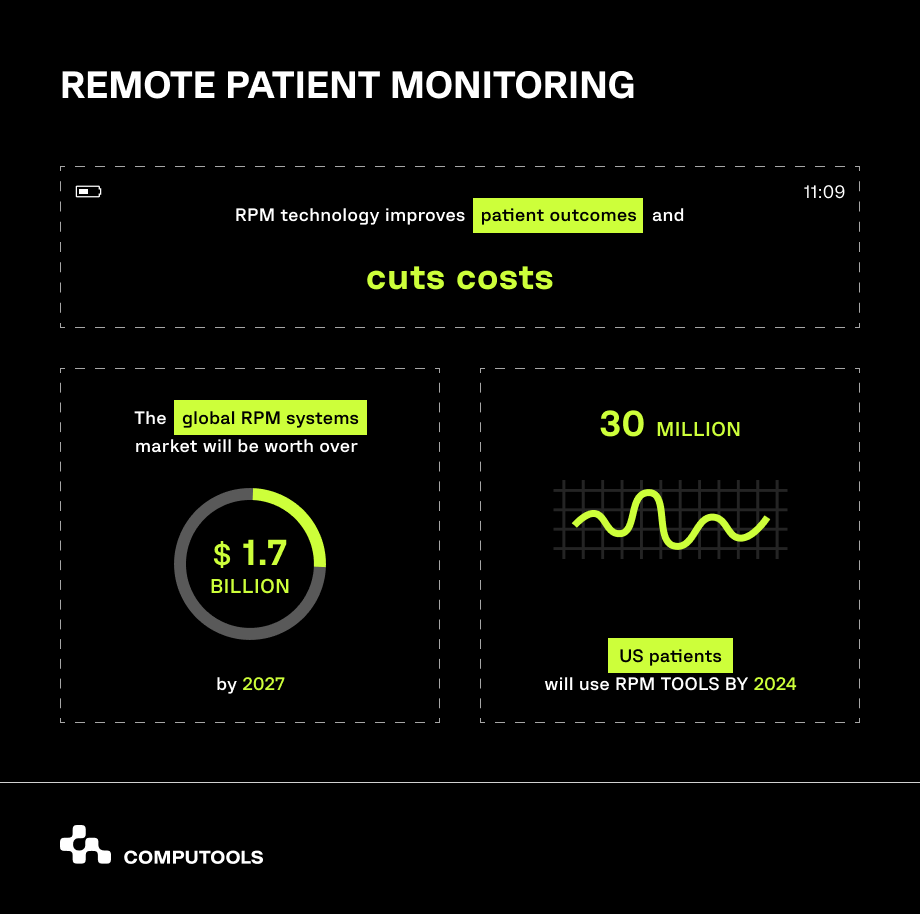The Future of Health Care: Remote Person Keeping An Eye On Streamlined
As health care continues to develop, one area that holds enormous pledge is remote individual tracking. With an emphasis on boosting patient outcomes and streamlining health care shipment, remote tracking is poised to transform the market.
Advantages of Remote Individual Tracking
Remote client monitoring presents a wide range of benefits for both healthcare companies and individuals alike. One considerable advantage is the ability to continually check people' crucial indications and health information remotely. This real-time monitoring enables medical care carriers to find any type of concerning changes or patterns immediately, resulting in very early interventions and potentially protecting against medical emergency situations. Furthermore, remote patient surveillance improves the overall top quality of treatment by supplying a much more alternative and comprehensive sight of patients' health and wellness status past traditional in-person brows through.
Moreover, remote patient surveillance can lead to better individual end results and complete satisfaction. Remote tracking can lower the requirement for regular healthcare facility check outs, reducing healthcare prices for both people and suppliers.
Technology Driving Remote Surveillance
In the realm of modern medical care, technological developments play a pivotal duty in driving the advancement and performance of remote person tracking. The integration of ingenious technologies such as wearable tools, mobile applications, and cloud-based platforms has actually reinvented the way medical care service providers remotely check and handle patient health and wellness - software for remote patient monitoring. These modern technologies enable continual real-time monitoring of essential signs, medicine adherence, and various other essential wellness data, enabling prompt interventions and customized treatment strategies
One key innovation driving remote tracking is the Internet of Things (IoT), which makes it possible for seamless connectivity between clinical tools and medical care systems. IoT tools such as smartwatches and wireless sensing units accumulate and send patient data to central systems, helping with remote surveillance from throughout the world. Man-made knowledge (AI) and machine understanding formulas additionally improve remote tracking by evaluating huge amounts of person data to spot patterns, anticipate wellness fads, and sharp doctor to prospective problems.
Influence On Medical Care Distribution
With the assimilation of innovative modern technologies driving remote patient monitoring, the influence on healthcare delivery is becoming transformative and progressively profound. Remote client monitoring allows doctor to supply even more positive and individualized care to people, bring about enhanced health results and decreased healthcare facility admissions. By remotely tracking vital indicators, signs, and medication adherence, healthcare specialists can step in early, avoiding complications and boosting the total high quality of care.
In addition, remote tracking enhances accessibility to health care solutions, especially for individuals in country or underserved locations. Clients can obtain continual surveillance and support from their homes, eliminating the requirement for frequent in-person brows through. This not only conserves time and decreases costs for both individuals and healthcare centers but likewise minimizes go right here the danger of direct exposure to transmittable illness, a critical factor to consider in the current health care landscape.
Additionally, remote individual surveillance allows doctor to better focus on and assign sources care based on real-time data. By recognizing risky clients and stepping weblink in promptly, healthcare distribution comes to be much more effective and reliable, eventually bring about a more sustainable and patient-centered health care system.
Improving Person Outcomes

Moreover, RPM permits proactive administration of chronic conditions, minimizing the chance of severe worsenings and hospital readmissions. Clients take advantage of enhanced convenience and convenience, as they can obtain care in their very own homes while remaining linked to their health care carriers. This continual tracking not only enhances person contentment yet likewise cultivates a feeling of empowerment and involvement in their own health management.
Future Trends in Remote Surveillance
Embracing advanced modern technologies in remote individual surveillance is shaping the future landscape of health care distribution. One significant pattern is the enhanced use of wearable gadgets and sensing units to collect real-time data, allowing medical care service providers to keep an eye on patients continuously without the requirement for constant in-person visits.

Furthermore, telehealth platforms are ending up being more advanced, permitting digital consultations, remote diagnosis, and remote individual Continued checking all in one integrated system (software for remote patient monitoring). This alternative technique to remote surveillance is streamlining health care shipment, improving person satisfaction, and ultimately, enhancing general high quality of treatment
Verdict
To conclude, remote client tracking provides many benefits in medical care distribution, driven by advancements in technology. It has the potential to improve client outcomes and revolutionize the method health care is provided. Future patterns in remote monitoring will continue to form the landscape of medical care, supplying chances for more efficient and personalized patient treatment.
Remote client tracking presents a wide variety of advantages for both healthcare carriers and individuals alike. In addition, remote person tracking improves the overall top quality of care by offering an extra detailed and alternative view of patients' wellness condition beyond typical in-person sees.
Furthermore, remote patient surveillance can lead to improved person results and complete satisfaction. Remote individual monitoring permits healthcare carriers to use more individualized and proactive treatment to patients, leading to enhanced wellness results and lowered healthcare facility admissions. Remote patient surveillance (RPM) plays a significant function in improving individual end results by offering constant, real-time information that enables medical care service providers to interfere promptly and change therapy strategies as needed.